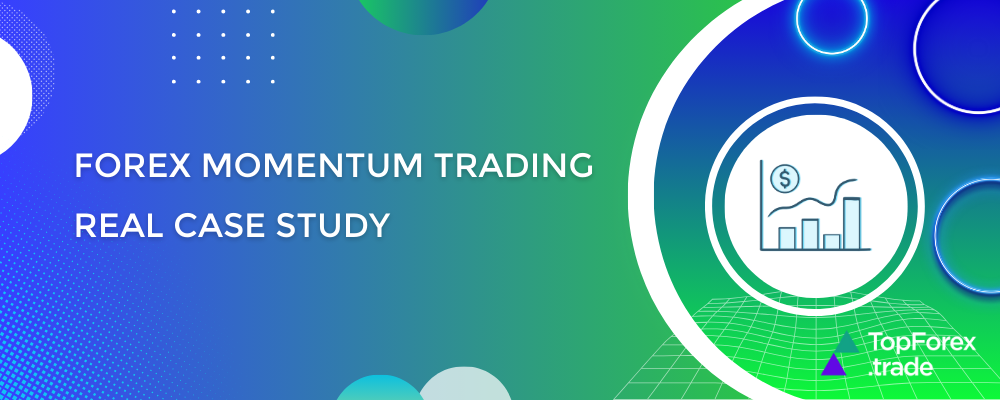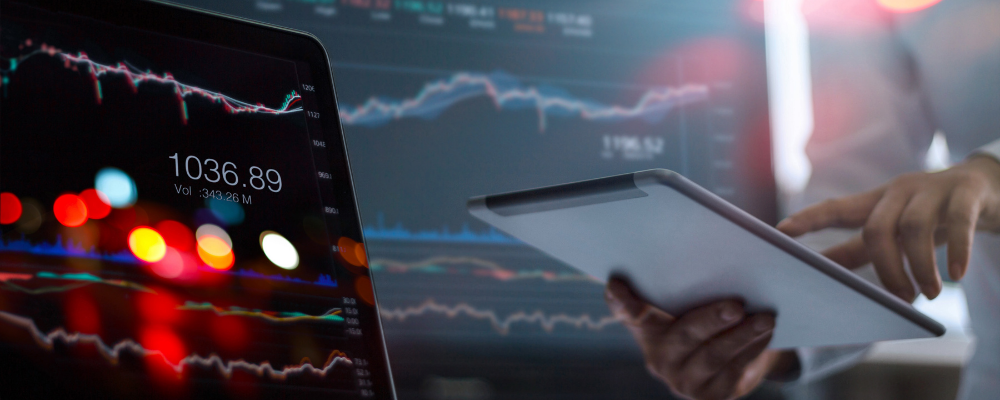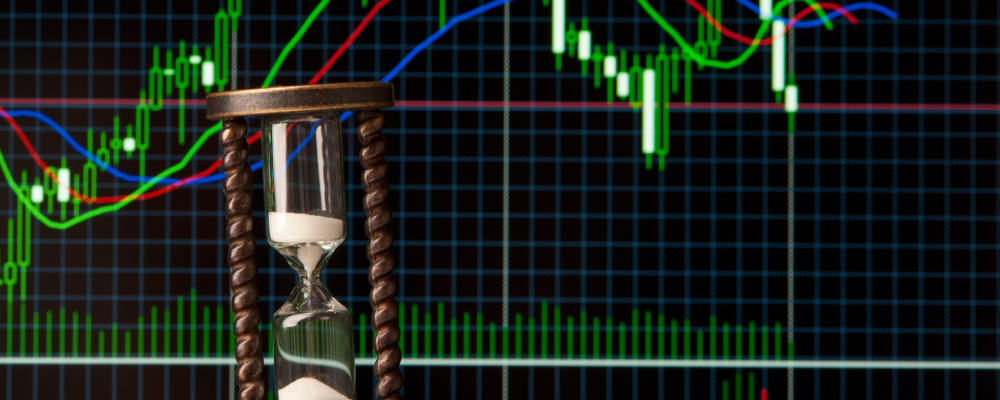The ultimate guide to Forex momentum trading: strategies, indicators, and broker reviews

Momentum trading is a popular strategy across Forex, stocks, and CFDs, where traders aim to profit from strong price movements by entering positions while the momentum is still building. By spotting assets with significant upward or downward trends, traders seek to capitalize before the momentum slows down. In this case study, we’ll explain what momentum trading is, explore essential indicators that guide these trades, and walk through a real-world example to see the strategy in action. We’ll also highlight top FX brokers that offer the tools and platforms needed to apply momentum strategies in Forex, stocks, and CFD markets.
❗ If you’re looking for the best FX brokers for momentum trading, scroll down or check out our list of trusted brokers.
What is FX momentum trading?

Momentum trading is a strategy that involves buying or selling financial instruments based on the strength of recent price trends. In Forex, stocks, and CFDs, traders using momentum strategies aim to capitalize on market volatility and rapid price movements. The core principle is that an asset that has been moving in a particular direction will continue to do so for some time, making it an attractive choice for short- to medium-term trades.
Instruments for momentum trading
Momentum trading can be applied to various instruments, including:
- Forex pairs: EUR/USD, GBP/USD, USD/JPY, and exotic pairs like USD/ZAR and USD/TRY.
- Stocks: Highly volatile stocks like Tesla (TSLA), Apple (AAPL), Amazon (AMZN), and emerging tech stocks.
- CFDs: Contracts for Difference on indices like US30, S&P 500, commodities like Brent Crude Oil and Gold (XAU/USD), and cryptocurrencies like Bitcoin (BTC/USD) and Ethereum (ETH/USD).
- ETFs: Exchange-traded funds that track sectors like technology, energy, or finance.
- Bonds: Momentum trading in bond ETFs when interest rate expectations shift.
How momentum trading works

Momentum trading is ideal for beginners due to its clear steps:
- Identify moving assets: Start by spotting currencies, stocks, or CFDs showing rapid price changes using simple charting tools.
- Check trading volume: High volume often supports strong momentum; beginners can rely on platform tools to highlight volume spikes.
- Use basic indicators: New traders can start with RSI to see if an asset is overbought or oversold, and moving averages to spot trends.
- Decide entry points: Buy when indicators show growing momentum; for example, when the 50-day MA crosses above the 200-day MA.
- Set exit points: Plan to exit when indicators suggest trend reversal, such as RSI nearing overbought levels.
- Manage risks simply: Always use stop-loss orders to cap potential losses. This beginner-friendly approach breaks down momentum trading into easy-to-follow steps, ensuring even new traders can apply it effectively.
Momentum trading involves identifying assets with strong recent performance and entering trades in the direction of the trend. Traders often use price charts, technical indicators, and trading signals to determine entry and exit points. The strategy works on the premise that once a trend is established, it is more likely to continue than reverse.
Technical indicators for momentum trading and how to use them

1️⃣ Relative Strength Index (RSI)
- What it is: RSI measures the speed and change of price movements, ranging from 0 to 100.
- How to use it: An RSI above 70 indicates overbought conditions (potential sell signal), while an RSI below 30 indicates oversold conditions (potential buy signal).
2️⃣ Moving Averages (MA)
- What it is: Moving averages smooth out price data to identify trends over a specific period.
- How to use it: The 50-day and 200-day moving averages are commonly used; a crossover (e.g., 50-day crossing above the 200-day) signals a bullish trend.
3️⃣ Moving Average Convergence Divergence (MACD)
- What it is: MACD is a trend-following momentum indicator that shows the relationship between two moving averages.
- How to use it: A bullish signal occurs when the MACD line crosses above the signal line, while a bearish signal occurs when it crosses below.
4️⃣ Stochastic Oscillator
- What it is: This indicator compares a security’s closing price to its price range over a specific period.
- How to use it: Values above 80 suggest overbought conditions, while values below 20 indicate oversold conditions.
5️⃣ Bollinger Bands
- What it is: Bollinger Bands consist of a moving average and two standard deviation lines.
- How to use it: Price touching the upper band indicates overbought conditions, while touching the lower band indicates oversold conditions.
Examples of momentum trading: real case study

- 💸 Forex example: A trader notices the EUR/USD pair has risen by 1.5% in 24 hours, signaling an uptrend. They check the 15-minute and 1-hour charts. The RSI on the 15-minute chart is at 65, indicating the market is approaching overbought but can still move higher. The 1-hour chart shows a bullish MACD crossover. Volume is increasing, confirming the trend. The trader enters a long position with a tight stop-loss below recent support and sets a take-profit near the previous high. As the RSI hits 75, the trader exits to secure profits before a potential pullback.
- 📈 Stock example: Tesla’s stock rises after strong earnings. A trader checks the 5-day and 20-day moving averages, confirming the bullish trend. They place a buy order above the $900 resistance level, with a stop-loss at $875 to minimize risk. As the stock continues up, they monitor volume and indicators. When the stochastic oscillator signals overbought conditions and volume drops, the trader exits, locking in profits before a possible correction.
The best brokers for Forex momentum trading
Picking a broker is key for momentum trading. Look for platforms that are easy to use, have low fees, fast trade execution, and good support. Here are the top brokers for momentum trading:
HF Markets FX momentum trading
- HF Markets: Offers tight spreads, fast execution, and support for automated trading.
AvaTrade FX momentum trading
- AvaTrade: Known for advanced tools like AvaTradeGO and MetaTrader platforms.
eToro FX momentum trading
- eToro: Provides social trading features and access to multiple asset classes.
Risk disclaimer: eToro is a multi-asset platform which offers both investing in stocks and cryptoassets, as well as trading CFDs.
CFDs are complex instruments and come with a high risk of losing money rapidly due to leverage. 61% of retail investor accounts lose money when trading CFDs with this provider. You should consider whether you understand how CFDs work, and whether you can afford to take the high risk of losing your money.
This communication is intended for information and educational purposes only and should not be considered investment advice or investment recommendation. Past performance is not an indication of future results.
Copy Trading does not amount to investment advice. The value of your investments may go up or down. Your capital is at risk.
Don’t invest unless you’re prepared to lose all the money you invest. This is a high-risk investment and you should not expect to be protected if something goes wrong. Take 2 mins to learn more.
eToro USA LLC does not offer CFDs and makes no representation and assumes no liability as to the accuracy or completeness of the content of this publication, which has been prepared by our partner utilizing publicly available non-entity specific information about eToro.
Related articles:
Momentum trading in Forex - FAQ